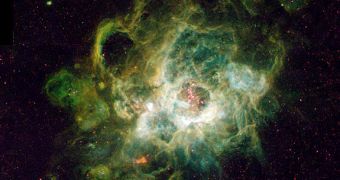Extremely high temperatures and pressures are all it takes to transform various compounds of hydrogen into substances that exhibit metal-like properties. As they lose electrons, germane, methane and silane, just a few of hydrogen's compounds, behave very differently than they do in their natural state, and may even offer new ways of looking at nuclear fusions and obtaining energy from renewable sources, the scientists behind the discovery announced.
In theory, even hydrogen could shift its behavior, and exhibit traits such as high-temperature superconductivity, which may come in very handy inside the plasma vacuum of a fusion generator. The discovery belongs to a team of international scientists, from the Carnegie Institution of Washington (CIW), the South China University of Technology (SCUT), and the University of Western Ontario (UWO), who recently studied the properties of silane, a hydrogen-rich compound.
“Recent studies have suggested that the metalization pressure of group IVa hydrides like methane, silane, and germane might not be not as high as it is for pure hydrogen. We thought silane would be a good system to study in order to get a look at this phase transition at a pressure at which it’s easier to confirm the material’s changes,” explained Xiaojia Chen, who is a physicist at CIW and SCUT.
“There’s great interest in these materials in terms of energy applications and in trying to better understand many planets. Some planets are mostly made of hydrogen in a very pressurized state just like what we make at the synchrotron. Understanding how this element functions in such an extreme condition could have a wide variety of implications,” the scientist added.
According to the team, who used the National Synchrotron Light Source (NSLS) instrument, very high pressure, applied via the use of two extremely-sharp diamonds, increases the reflexiveness of silane, which seems to indicate the fact that the compound underwent a process of metallization before becoming opaque.
The results of the research were published in the January 8, 2008 issue of the journal Proceedings of the National Academy of Sciences. Later in the year, an independent group confirmed the finding via the use of electronic resistance measurements.

 14 DAY TRIAL //
14 DAY TRIAL //